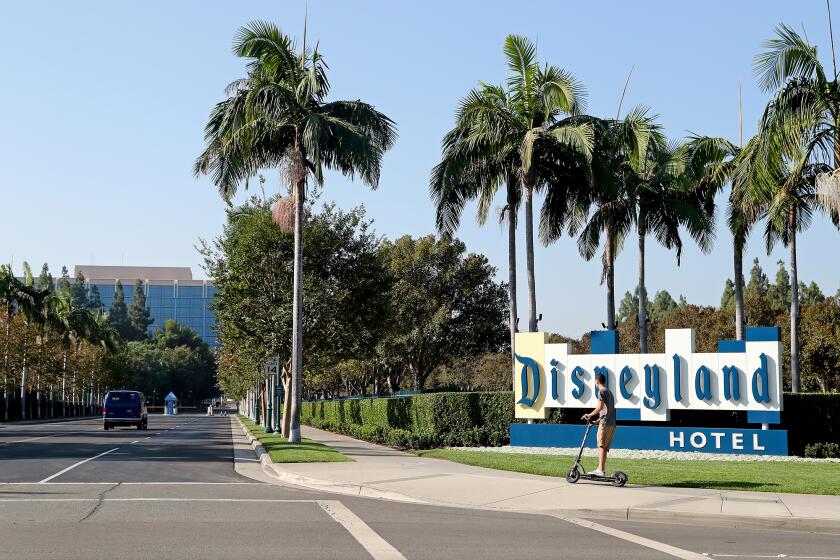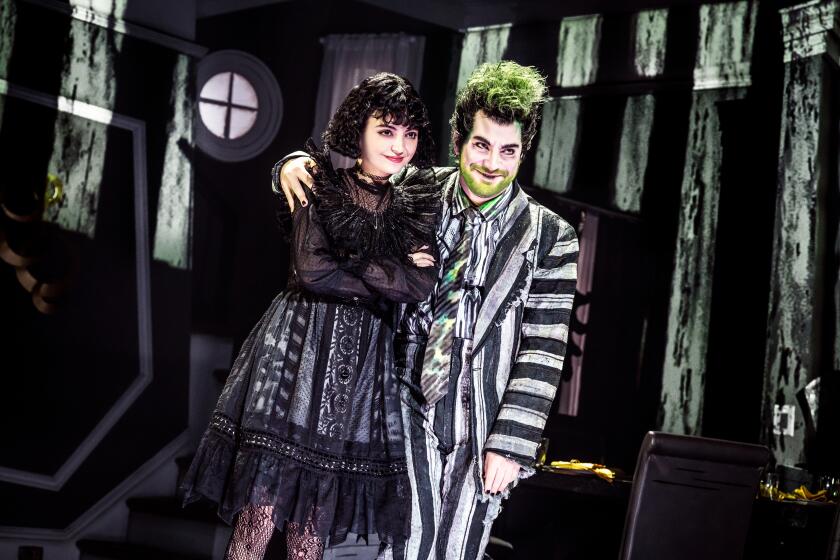Laguna Art Museum explores its past with ‘Art Colony’ exhibit
Laguna Beach is known far and wide as an art town.
That reputation stems from its establishment as an art colony in the early 1900s, with artists Norman St. Clair, William Swift Daniell and Gardner Symons buying and building properties there.
The artists who settled in the sleepy beach community were mostly transplants from the East Coast and Midwest. Many of them would go on to form the influential Laguna Beach Art Assn. in 1918.
Through Jan. 13, the Laguna Art Museum is presenting “Art Colony: The Laguna Beach Art Association, 1918-1935,” an exhibition that looks back at the organization that would evolve into the art museum. It’s also the cornerstone presentation of the museum’s centennial celebration, which has been taking place since the beginning of the year.
“Without those artists of a hundred years ago, we wouldn’t even exist,” said Malcolm Warner, the museum’s executive director since 2012. “We try to keep up the traditions of openness and outreach that were part of their mission from the beginning, and will continue to pay homage to them by showing their work in our galleries.”
The Laguna Beach Art Assn.’s first exhibit was in July 1918. The group officially formed in August that year with 150 charter members, of whom only 35 were artists.
Janet Blake and Deborah Epstein Solon co-curated “Art Colony,” which features about 100 paintings, plus photos, ephemera and lots of historical information about individual artists. Blake is curator of historical art at the museum; Solon is an adjunct professor of art history at Saddleback College, Santa Ana College and Cal State Fullerton.
Blake says she organized a similar show in 1986, celebrating the establishment of the Laguna art colony. But in this day and age, with the internet and computers ubiquitous and über-powerful in research, the two found much more about the artists than had been unearthed in previous efforts.
“When I did this show in 1986, there was no internet,” Blake said. “There were none of the tools available today to research. Both Deb Solon and I learned so much more about the impact of the artists on this community and how it literally shaped the community as an American art colony and as a community whose focus remains today on the arts.”
Among the Laguna Beach Art Assn. founders were Anna Hills, Edgar Payne, Frank Cuprien, William Wendt, Marion and Elmer Wachtel and Conway Griffith. Works by each of those artists are featured in the current show.
Over time, it became clear that many of the association members were not just artists but also environmental conservationists. They pushed for the preservation of the coastline and Laguna Canyon from massive development, and to a large extent succeeded, Blake said.
“The art association implored developers not to develop the ocean side of Cliff Drive,” she said. “Heisler Park exists partly because the artists really pushed to keep it undeveloped.”
From its start, the association also had a significant number of female members and artists in an era before women’s suffrage. Many important women — Hills, Mabel Alvarez, Donna Schuster, Julia Bracken Wendt, Marion Kavanagh Wachtel, Marion George — were associated with the group.
Inside the ‘Art Colony’
The museum exhibit features dozens of significant artworks, including paintings by major artists who were seen in the Laguna Beach Art Assn.’s original exhibits.
William Wendt might be one of the best known of that group, and the exhibit features several of his grand, picturesque California Impressionist paintings, including “Old Coast Road” (1916), “The Mantle of Spring” (1917) and “Laguna Coast” (1930).
Joseph Kleitsch also is well-represented in the show, which is fitting because he may be best recognized for his nostalgic depictions of “old Laguna.” His oil on canvas “The Old Post Office” (circa 1922-23) has become a mainstay at the Laguna Art Museum, which owns the work in its permanent collection.
There also are notable works by Alvarez, Cuprien, Clarence Hinkle, Edouard Vysekal, Lorser Feitelson and George Hurrell, a onetime Laguna resident who photographed many Hollywood stars during his career, including Bette Davis, Clarke Gable, Joan Crawford, Humphrey Bogart and Rita Hayworth. He also photographed members of the art association, and one gallery is dedicated to their portraits.
Interesting trivia is sprinkled throughout the show and its accompanying catalog. The first art association gallery was “a ramshackle old building” on the grounds of the Laguna Beach Hotel that presented the first exhibit in 1918.
Ten years later, a groundbreaking at the corner of Coast Boulevard and Cliff Drive initiated the construction of the LBAA Gallery. It opened its first exhibition in February 1929 at 307 Cliff Drive, where the museum now stands.
Organizers of the current exhibit have decorated the main Steele Gallery to look as close as possible to how it appeared in 1929.
Racial diversity lacking in the group
One thing a visitor might notice is that all the artists from the establishment of Laguna Beach as an art colony — and the early days of LBAA — were white. The same goes for all 66 artists in the exhibit.
Apparently that was simply the racial consistency of the group that settled the art colony in the early 1900s, though the land had been occupied by the Spanish and by Native Americans for generations.
“This was a pretty much lily white organization,” Blake said of the art association. “In 1900, when people first started coming to Laguna Beach and painting, that’s the way it was.”
“Almost all the association’s members came from European backgrounds, and some were first-generation immigrants,” Warner said. “The phenomenon of the artists’ colony started in Europe, so maybe it’s not so surprising.”
The 1920s and ’30s saw some stylistic diversity, with modernist works from more avant-garde perspectives making their way into LBAA shows. Ultimately, though, the members of LBAA reflect the Laguna Beach population through the years and today. According to the 2010 U.S. Census, whites made up 90.9% of the city’s population. A 2017 Census Bureau estimate placed the number at 90.3%.
The exhibit includes portraits of people of color, including John Hubbard Rich’s “Mme. Yup See” (1919), Charles Percy Austin’s “La Buenaventura” (circa 1927) and Edgar Payne’s “Untitled, Navajo riders” (circa 1929).
IF YOU GO
What: “Art Colony: The Laguna Beach Art Association, 1918-1935”
When: 11 a.m. to 5 p.m. daily (closed Wednesdays), through Jan. 13; open until 9 p.m. Thursdays
Where: Laguna Art Museum, 307 Cliff Drive, Laguna Beach
Cost: $7 general; $5 students, senior citizens and active military; free for children younger than 12
Information: (949) 494-8971, lagunaartmuseum.org
Richard Chang is a contributor to Times Community News.
UPDATES:
5:20 p.m.: This article was updated with information about the exhibit’s portraits of people of color.
This article was originally published at 2:10 p.m.
All the latest on Orange County from Orange County.
Get our free TimesOC newsletter.
You may occasionally receive promotional content from the Daily Pilot.




